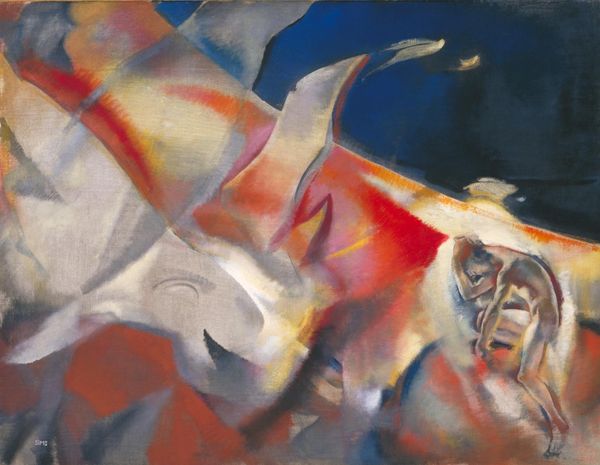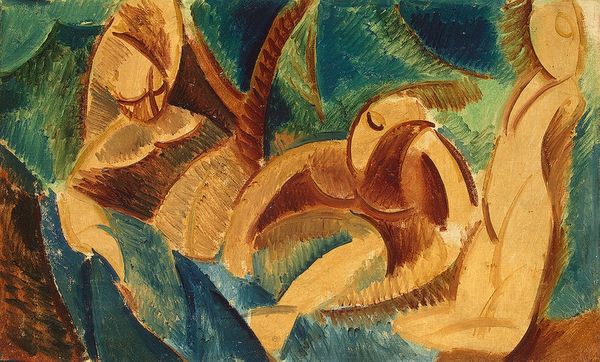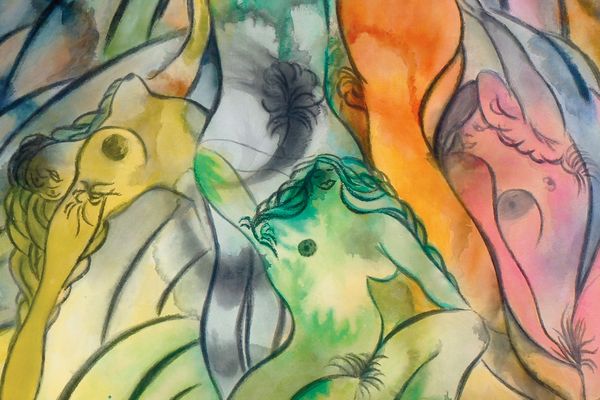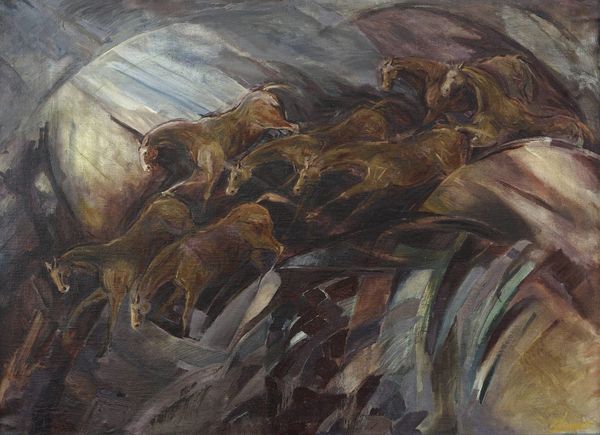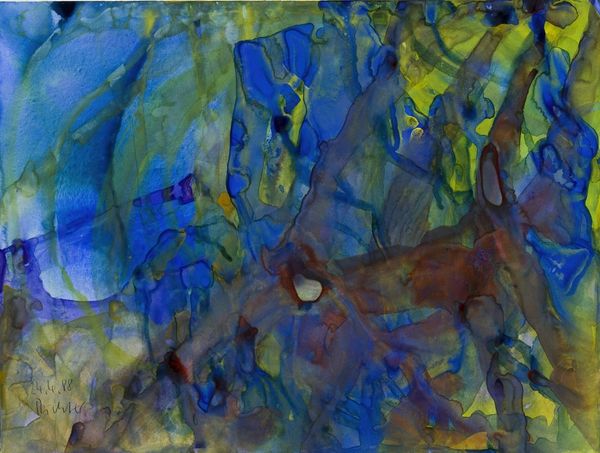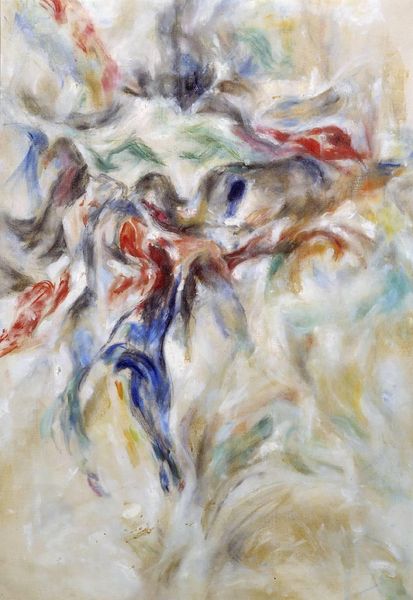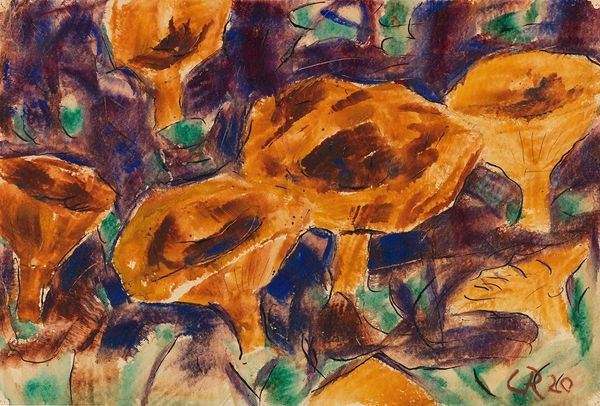
Copyright: Petros Malayan,Fair Use
Curator: Petros Malayan’s “Still Life with Fish,” created in 1973, presents a compelling study in form, rendered in oil paint and perhaps even watercolor. What's your immediate reaction? Editor: A definite melancholy. The impasto technique gives a palpable texture, a weightiness to these fish that, honestly, feels more like a somber commentary than a celebration of the daily catch. Are they symbols? Curator: They could be. The fish has appeared for centuries in art and myth, often representing abundance or spiritual sustenance. However, in certain contexts, especially when depicted lifeless, it can become a vanitas symbol. What sort of work do you suppose went into rendering such a thing? Editor: Looking closer, it appears that some form of layering has been deployed here, maybe a wash underneath, the way watercolor lends itself to the heavier oils on top that you can see have been dabbed. I’m compelled to inquire more about what was used and its application, since those forms can reveal an era, but this particular picture gives so little. Curator: Interestingly, though seemingly straightforward, Malayan leans toward abstraction. He isn’t simply representing reality, is he? It feels as though this artist's feelings get translated in some way to the viewer. Editor: I see your point about realism; it’s skewed by this post-impressionist lens. There’s a distortion that speaks to memory and perhaps, the fading away of material existence itself. Still life traditionally signifies wealth. This treatment… does the opposite? Curator: Perhaps. The composition draws my eye not just to individual objects but to the space between them—those subtle dark areas surrounding each fish. And how the lighting impacts this as a composition, creating a visual echo through the water even if unseen. What about these areas? Editor: I think Malayan deliberately plays with our perception here. He emphasizes form, but in doing so, highlights the fragility and the inevitable decomposition all things meet when consumed for profit. The tools to produce art also mirror society at that time in many different ways too, it becomes telling that the tools remain. Curator: Thank you, this has expanded the work and context quite productively. I think I may never quite look at this “Still Life with Fish” in quite the same way again. Editor: It’s hard not to see this work as steeped in an anxiety of materials from that period. It offers insight and perhaps, a subtle beauty, even in what seems a simple tableau.
Comments
No comments
Be the first to comment and join the conversation on the ultimate creative platform.
